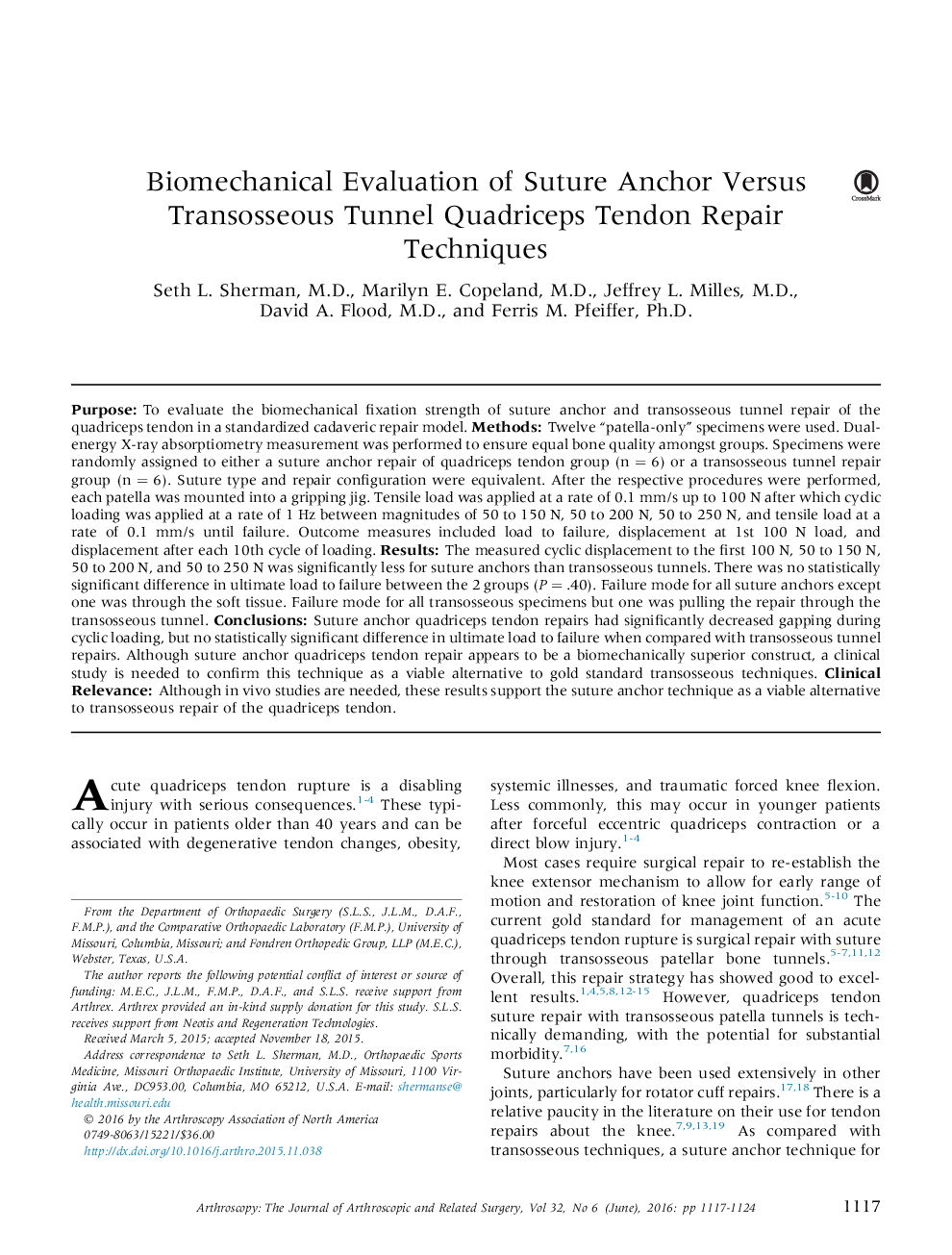| Article ID | Journal | Published Year | Pages | File Type |
|---|---|---|---|---|
| 4041852 | Arthroscopy: The Journal of Arthroscopic & Related Surgery | 2016 | 8 Pages |
PurposeTo evaluate the biomechanical fixation strength of suture anchor and transosseous tunnel repair of the quadriceps tendon in a standardized cadaveric repair model.MethodsTwelve “patella-only” specimens were used. Dual-energy X-ray absorptiometry measurement was performed to ensure equal bone quality amongst groups. Specimens were randomly assigned to either a suture anchor repair of quadriceps tendon group (n = 6) or a transosseous tunnel repair group (n = 6). Suture type and repair configuration were equivalent. After the respective procedures were performed, each patella was mounted into a gripping jig. Tensile load was applied at a rate of 0.1 mm/s up to 100 N after which cyclic loading was applied at a rate of 1 Hz between magnitudes of 50 to 150 N, 50 to 200 N, 50 to 250 N, and tensile load at a rate of 0.1 mm/s until failure. Outcome measures included load to failure, displacement at 1st 100 N load, and displacement after each 10th cycle of loading.ResultsThe measured cyclic displacement to the first 100 N, 50 to 150 N, 50 to 200 N, and 50 to 250 N was significantly less for suture anchors than transosseous tunnels. There was no statistically significant difference in ultimate load to failure between the 2 groups (P = .40). Failure mode for all suture anchors except one was through the soft tissue. Failure mode for all transosseous specimens but one was pulling the repair through the transosseous tunnel.ConclusionsSuture anchor quadriceps tendon repairs had significantly decreased gapping during cyclic loading, but no statistically significant difference in ultimate load to failure when compared with transosseous tunnel repairs. Although suture anchor quadriceps tendon repair appears to be a biomechanically superior construct, a clinical study is needed to confirm this technique as a viable alternative to gold standard transosseous techniques.Clinical RelevanceAlthough in vivo studies are needed, these results support the suture anchor technique as a viable alternative to transosseous repair of the quadriceps tendon.
